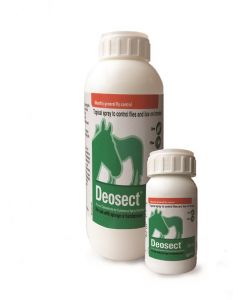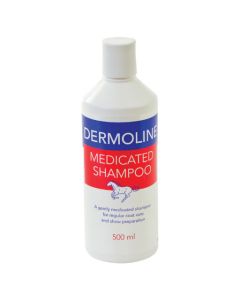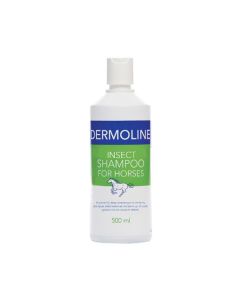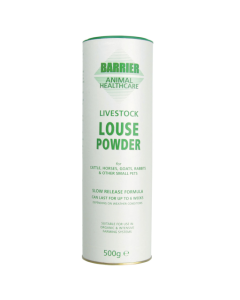Managing Lice For Comfortable And Healthy Horses
-

- 5 Jun 2024
- 0 Comments

Lice infestations in horses can be a persistent and troubling issue for equine owners, particularly as the warm summer months approach. Understanding how lice multiply, and the measures that can be taken to manage and prevent these infestations is crucial for maintaining your horse's health and comfort.
What Are Lice and How Do They Affect Horses?
Lice are tiny, wingless insects that live on the skin of animals, including horses. There are two main types of lice that affect horses: biting lice (Mallophaga) and sucking lice (Anoplura). Biting lice feed on the horse's skin and debris, while sucking lice feed on the horse's blood. Both types can cause significant discomfort and health issues, including:
Itching and irritation: Infested horses often scratch and bite at affected areas, leading to hair loss and skin damage.
Restlessness: Continuous irritation can result in restlessness and behavioral changes.
Weight loss: Severe infestations can lead to weight loss due to the stress and discomfort.
Anemia: In extreme cases, sucking lice can cause anemia due to blood loss.
Why Does Lice Infestation Worsen in Late Spring to Early Summer?
Lice infestations tend to worsen during the summer months due to several factors:
- Increased temperature and humidity: Warm and humid conditions create an ideal environment for lice to reproduce.
- Close contact: Horses are often in closer contact during summer activities, which facilitates the spread of lice.
- Thicker coats: Horses may retain a thicker coat during summer, providing more habitat for lice to thrive.
Signs of Lice Infestation
Detecting lice in horses early can help manage and control the spread. Common signs include:
- Frequent scratching and rubbing against objects
- Visible nits (lice eggs) attached to the hair
- Patchy hair loss and skin irritation
- Restlessness and signs of discomfort
- Presence of lice, visible as tiny, moving dots on the skin
How to Manage and Prevent Lice Infestations
Managing lice infestations requires a combination of treatment and preventative measures. Here’s a comprehensive approach:
1. Regular Grooming:
- Frequent inspections: Regularly check your horse for signs of lice, especially in the mane, tail, and underbelly areas.
- Thorough grooming: Use a fine-toothed comb to remove lice and nits. Grooming helps in early detection and can reduce lice populations.
2. Topical Treatments:
- Insect shampoos and sprays: Use products specifically designed for lice treatment in horses. Follow the instructions carefully to ensure effective treatment.
- Repeat treatments: Lice have a lifecycle that can span several weeks, so multiple treatments may be necessary to eradicate them completely.
3. Envrionmental Management
- Clean living spaces: Regularly clean and disinfect stables, tack, grooming equipment, and bedding to prevent reinfestation
- Isolate infested animals: If you have multiple horses, isolate those with lice to prevent the spread to others.
4. Diet and Health:
- Balanced nutrition: Ensure your horse receives a balanced diet to support a healthy immune system, which can help combat infestations.
- Regular veterinary care: Routine check-ups can help detect and address lice infestations early, preventing more severe outbreaks.
Preventative Measures
Prevention is always better than cure, and several strategies can minimise the risk of lice infestations:
-
Quarantine New Arrivals:
When introducing new horses to your stable, quarantine them for at least two weeks. This period allows you to monitor and treat any lice infestations before they spread to other horses. -
Maintain Cleanliness:
Regularly clean and disinfect barns, stables, and equipment. Ensure that bedding is frequently changed and thoroughly cleaned. -
Reduce Stress:
Stress can weaken a horse’s immune system, making it more susceptible to lice and other parasites. Ensure that your horse's living conditions are comfortable, with ample space and minimal stressors. -
Regular Health Checks:
Conduct regular health checks and grooming sessions. Early detection of lice can prevent an infestation from escalating. -
Use Preventative Products:
Consider using products like lice repellents and insect sprays as preventative measures, especially during peak seasons. - carousel of lice control products.
Lice in horses can be a significant issue, particularly during the summer months when conditions are favorable for these pests. By understanding the nature of lice, recognising the signs of infestation, and implementing both treatment and preventative strategies, horse owners can ensure their animals remain healthy and comfortable.
Regular grooming, environmental management, and proactive care are essential components of effective lice control. By taking these steps, you can protect your horses from the discomfort and health risks associated with lice infestations.













